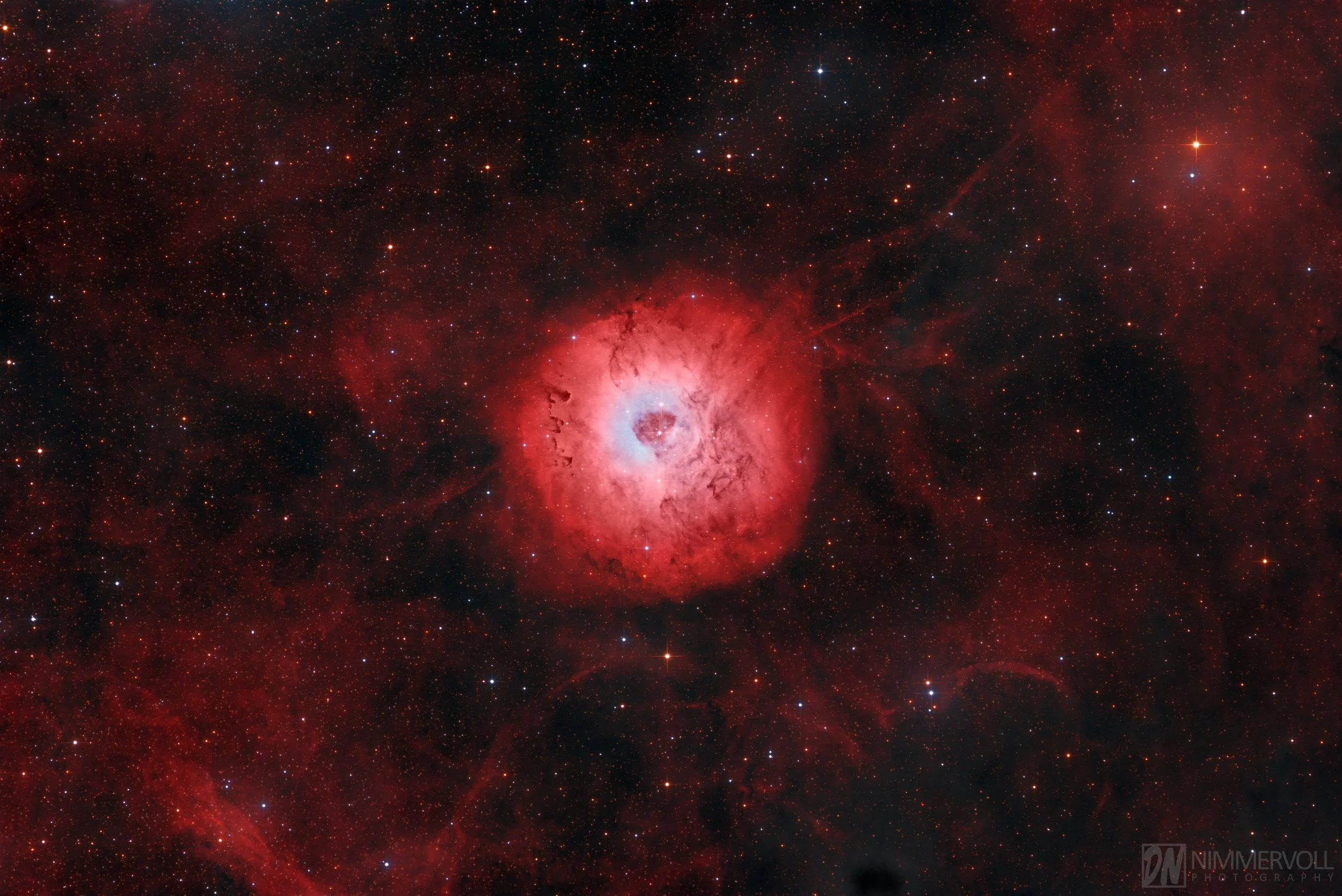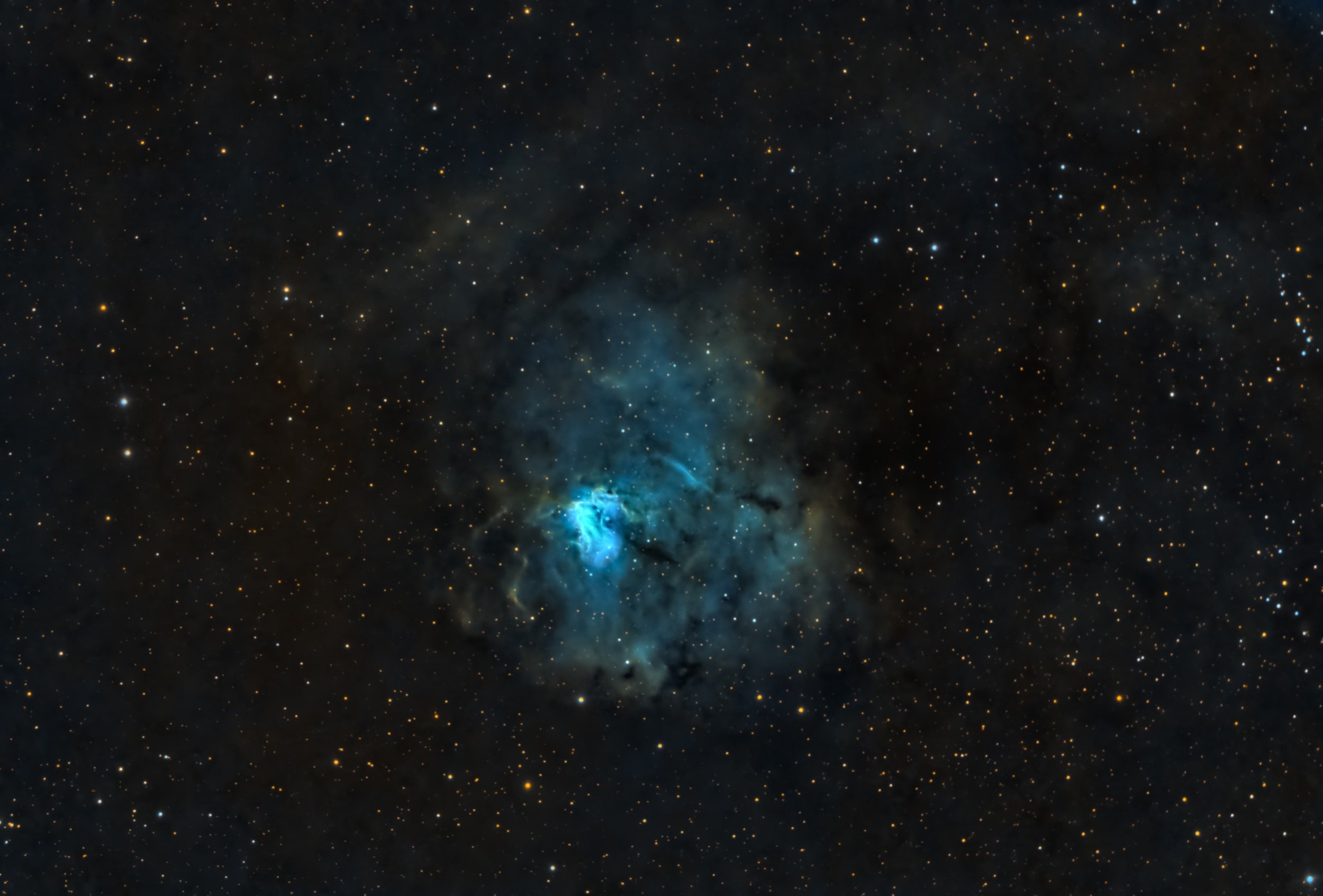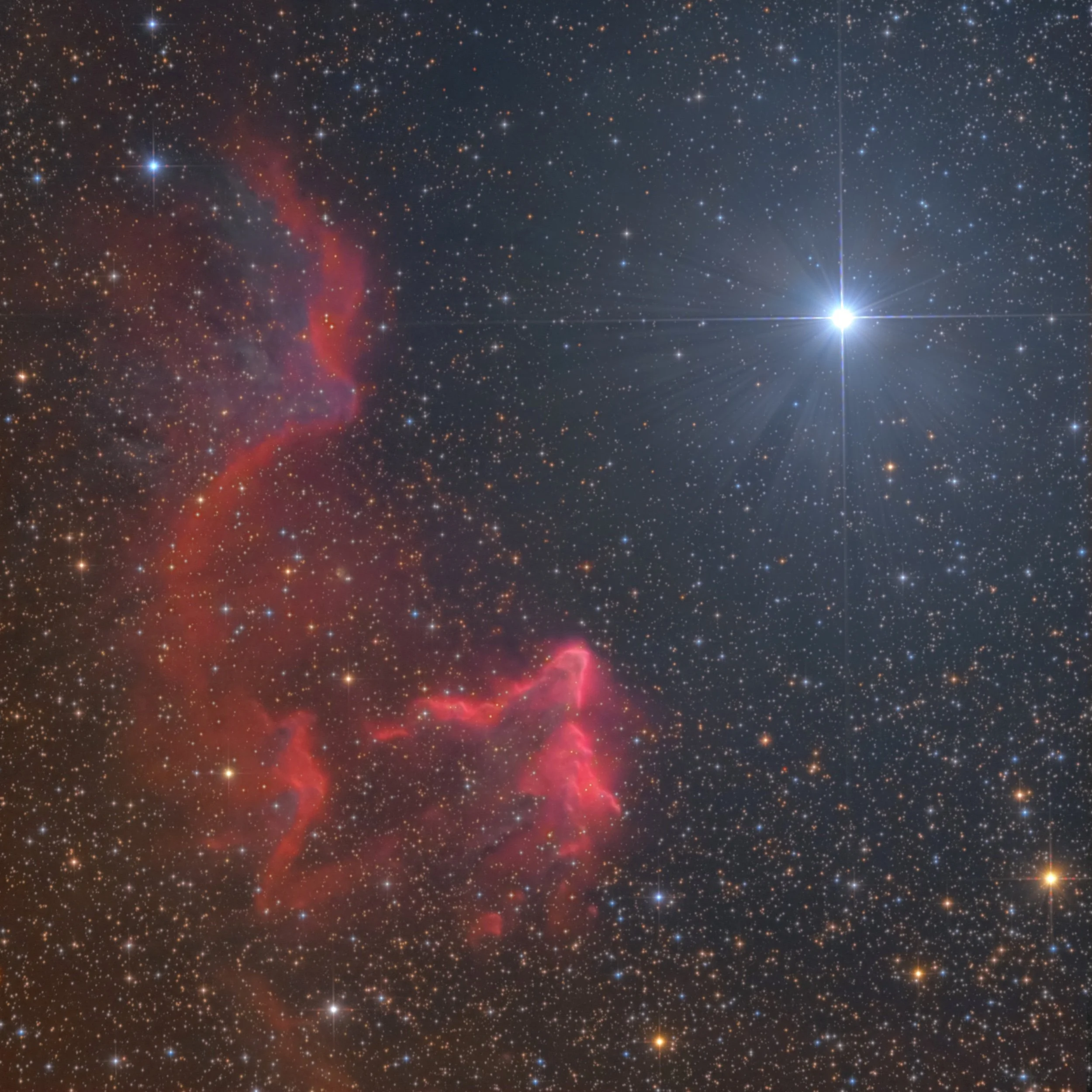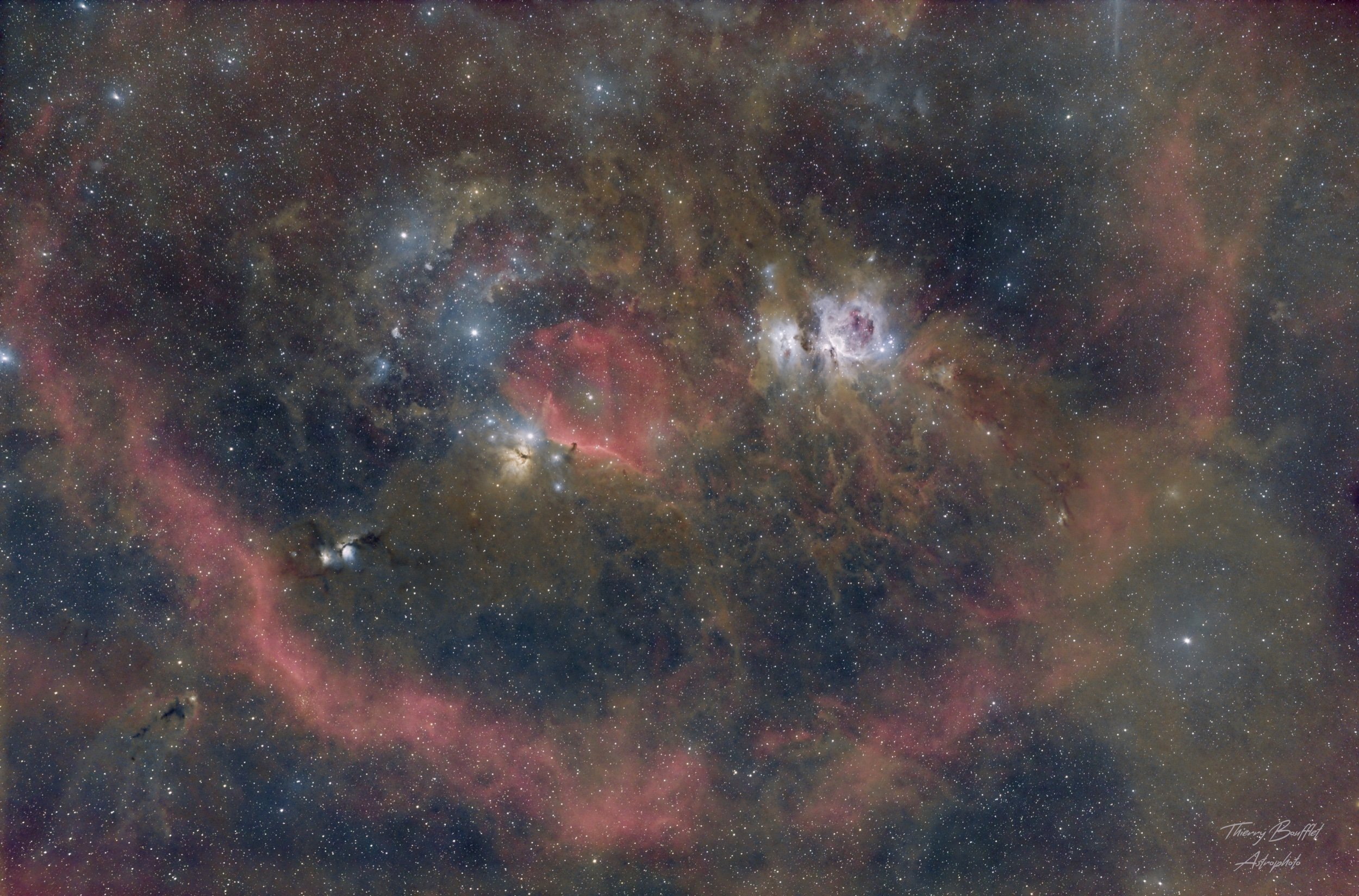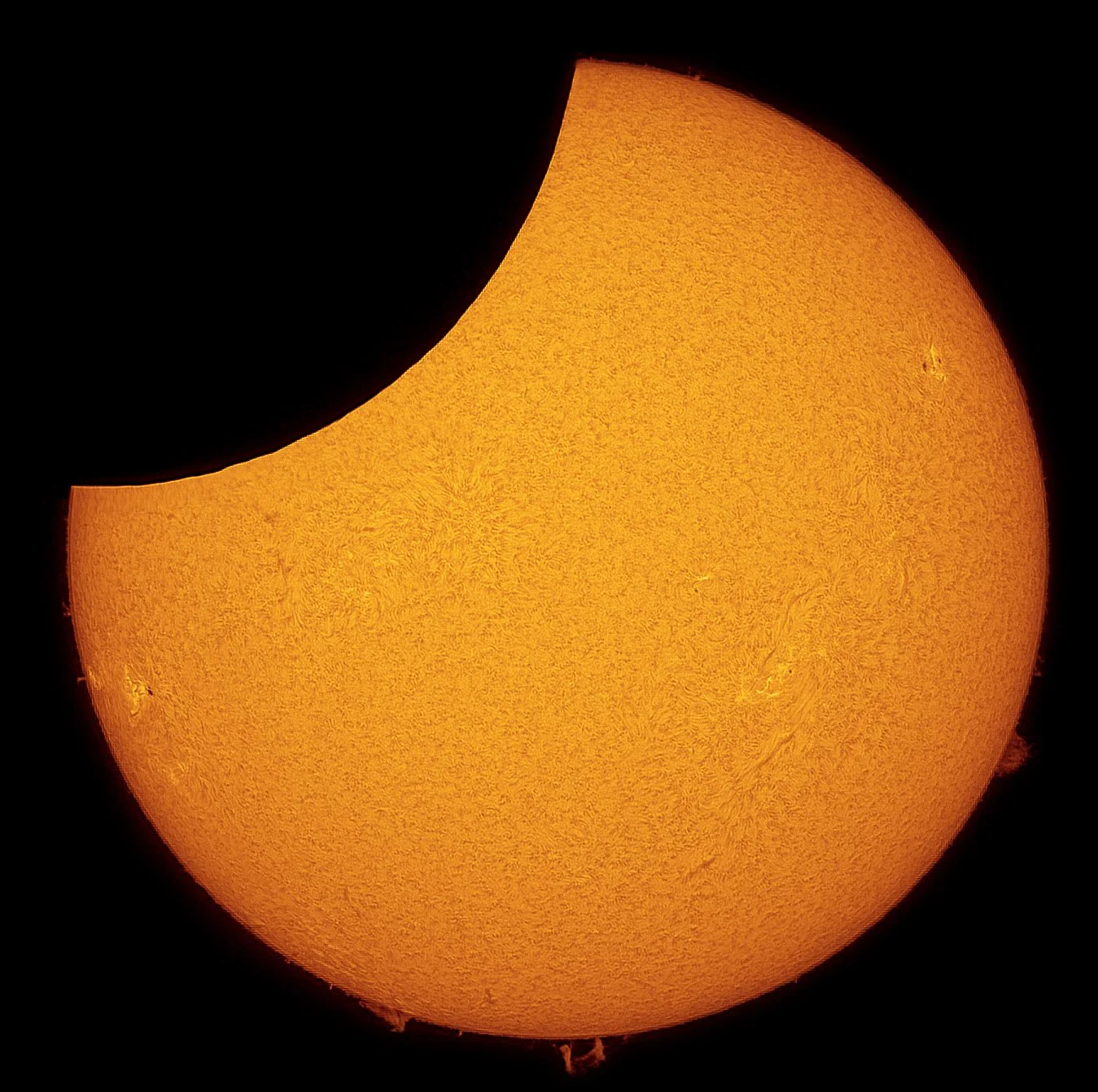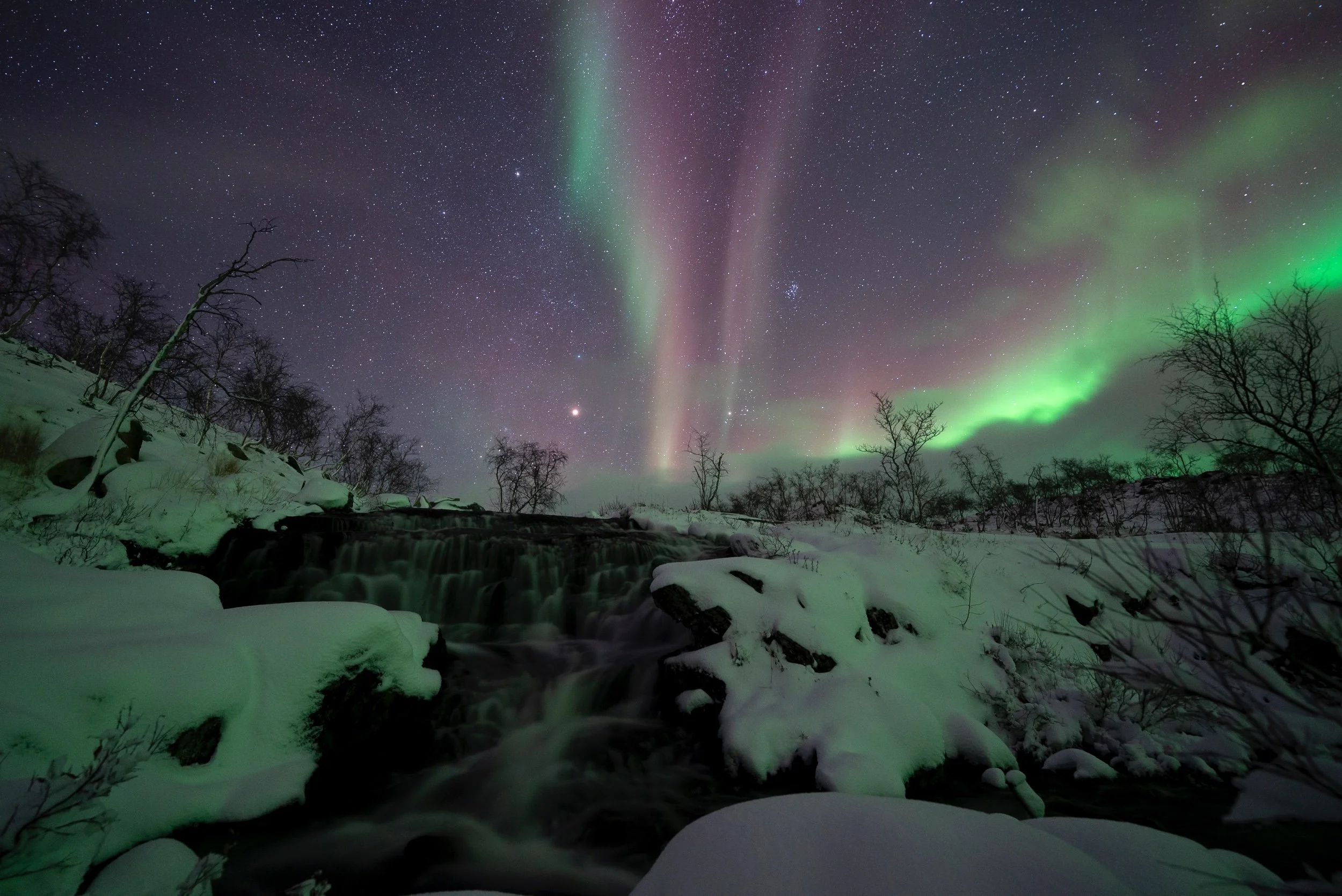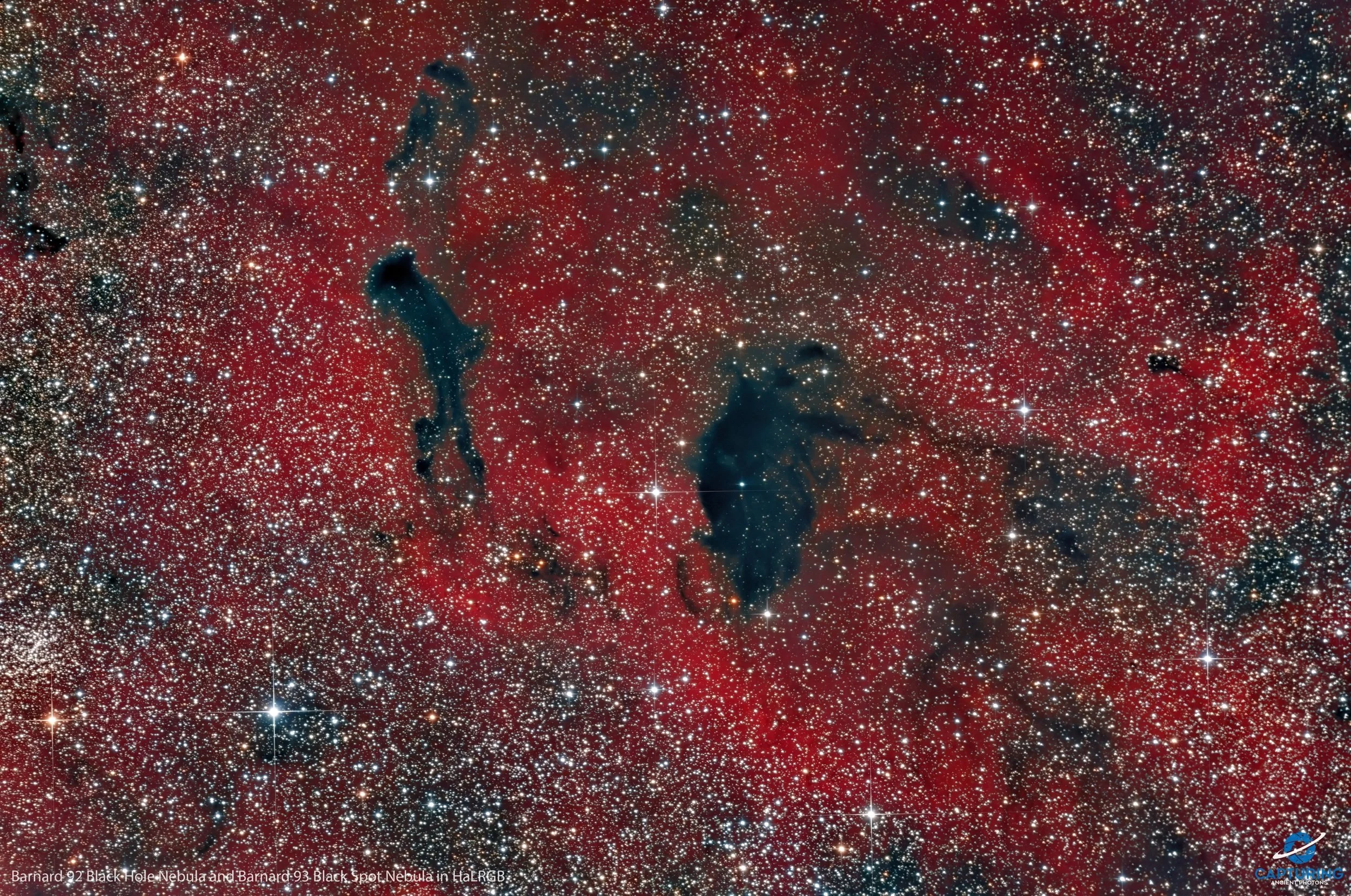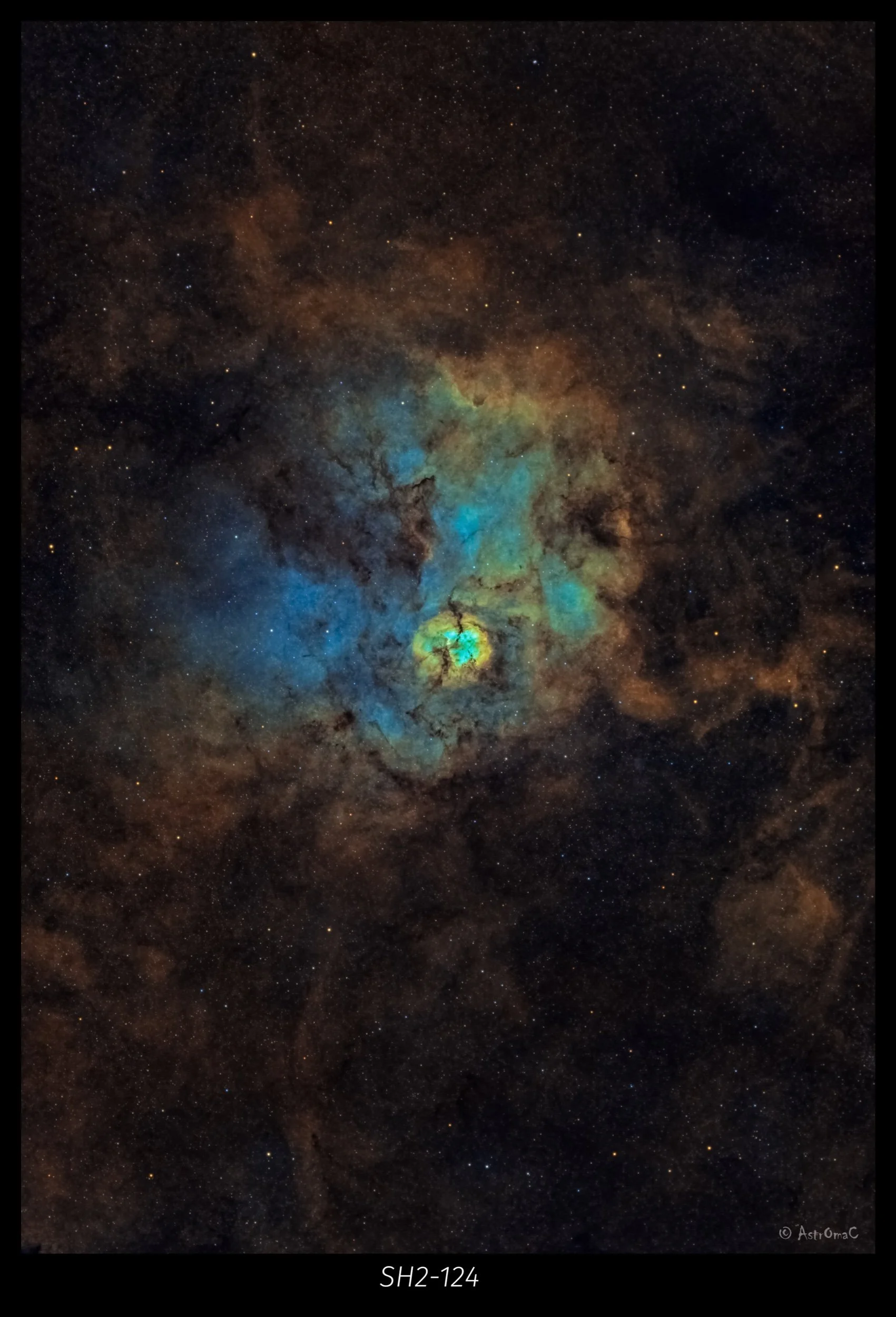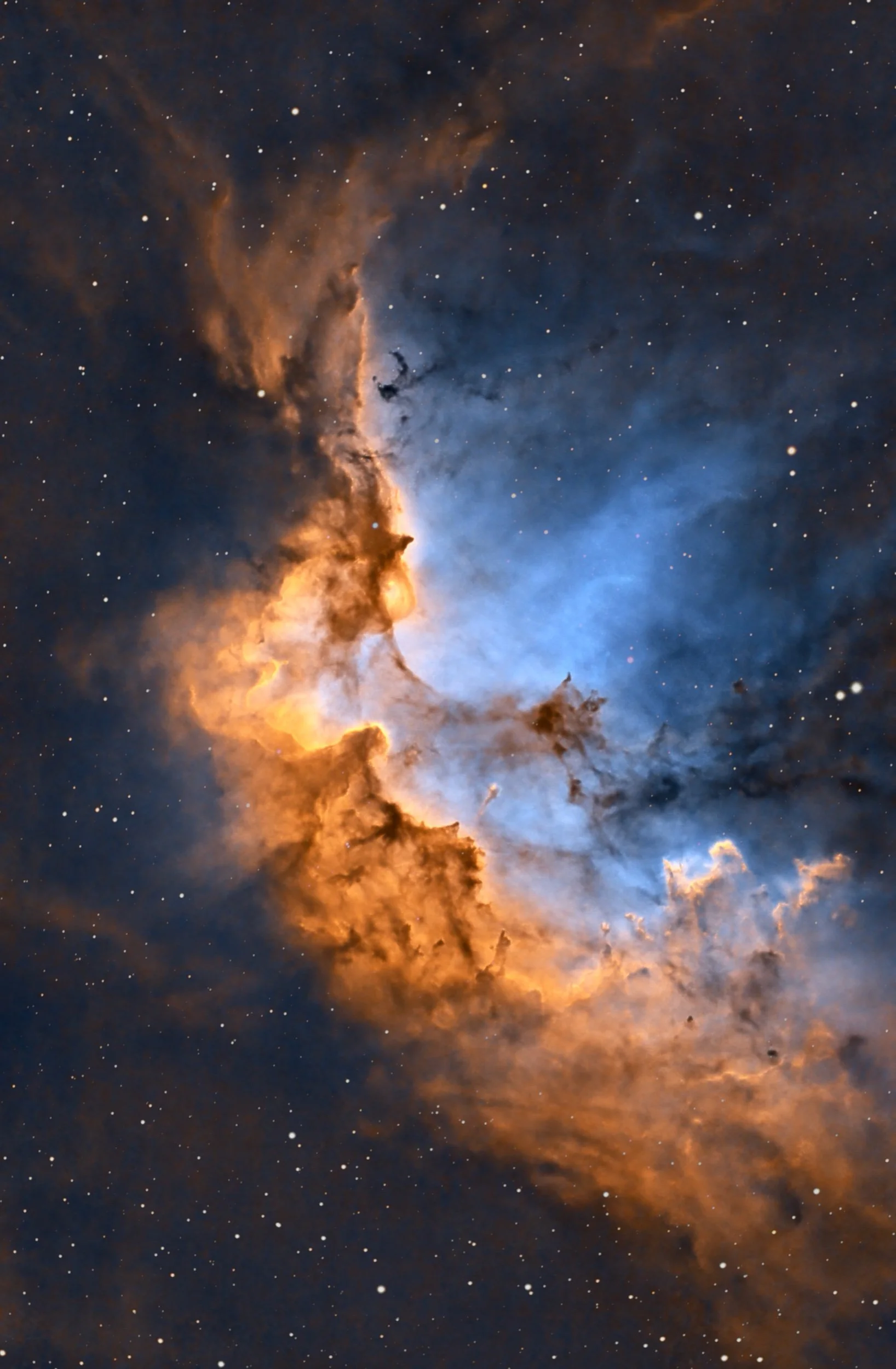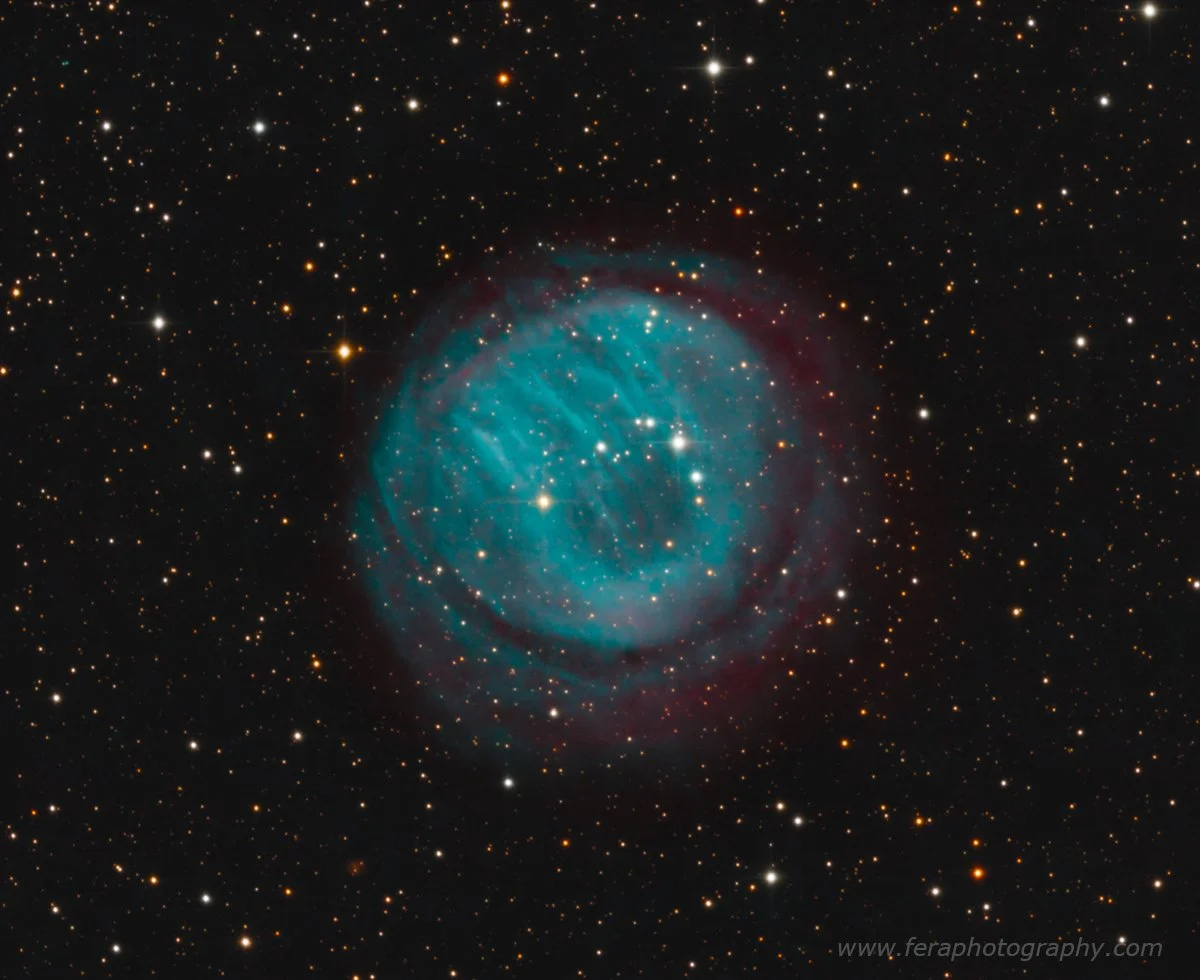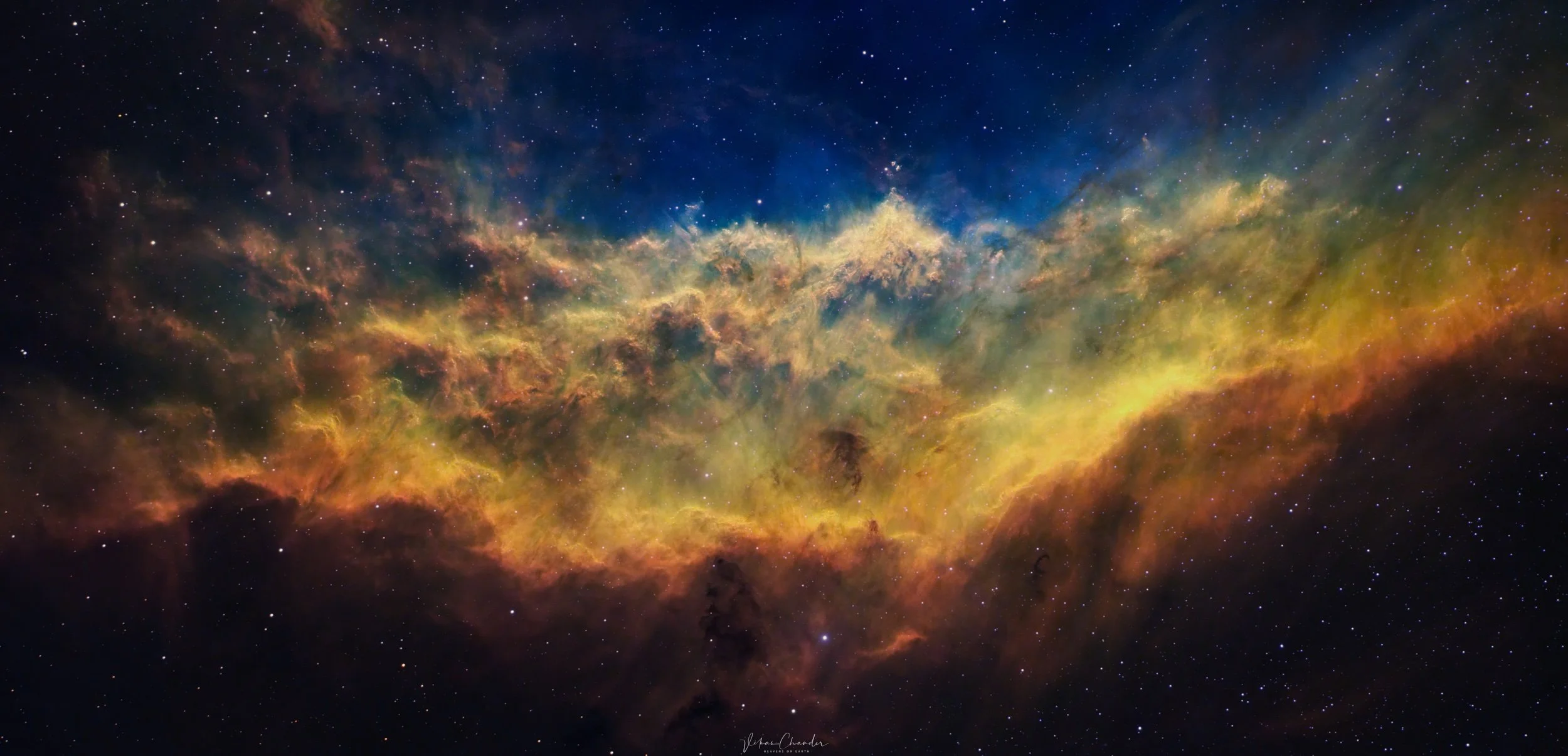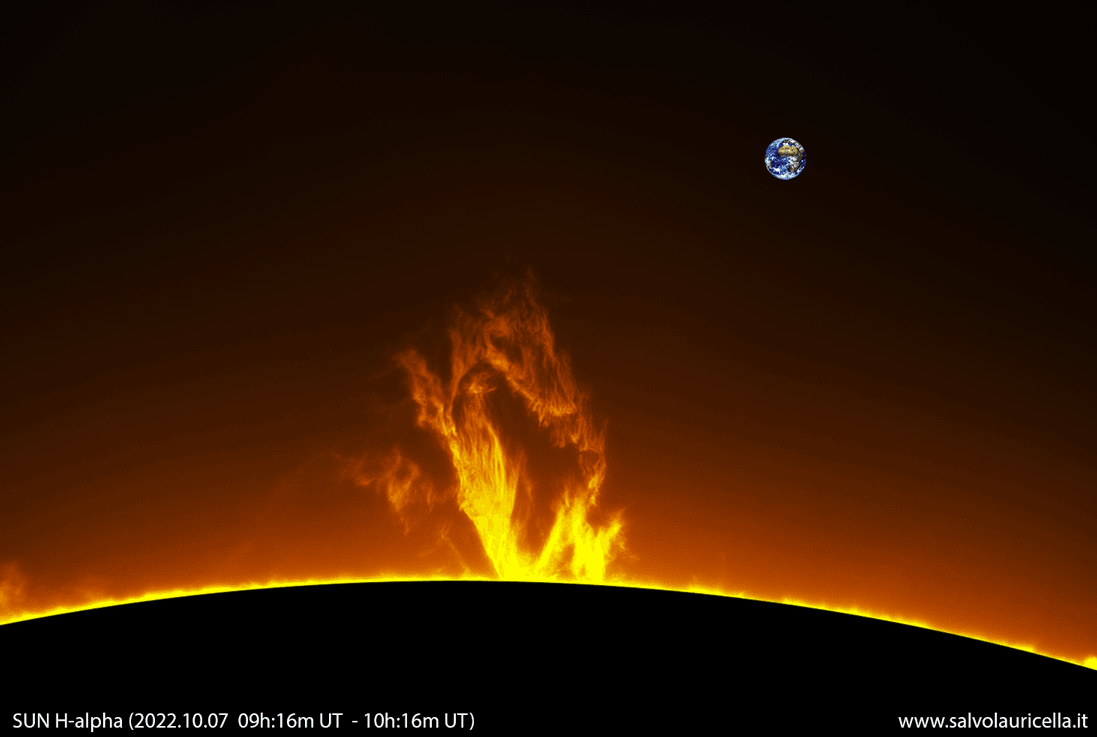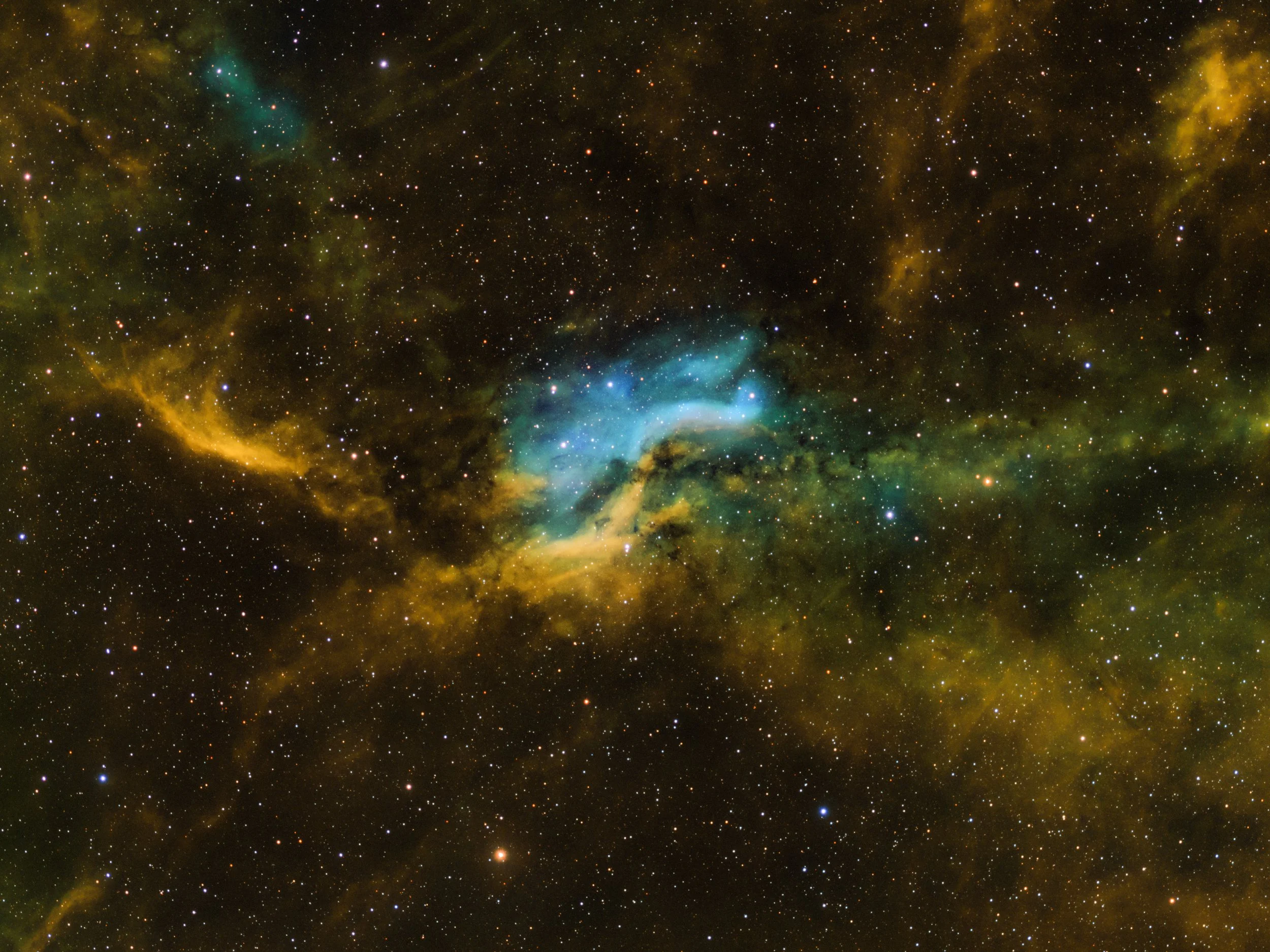
AAPOD2 Image Archives
M81 & m82
Image Description and Details :FSQ106EDXIII and QSI683
Filter Astrodon
L: 39 x 900s
RGB: (19, 14, 18) x 300s
ORION ASTROGRAPH and 294C pro
Filter Optolong
L-PRO: 120 x 240s
TS RC 12" TRUSS and MORAVIAN G2-8300 MARK II
Filter Astronomik
L: 49 x 300s
Ha: 21 x 600s
RGB: 21 x 240s bin 2
Copyright: Luca Dinoi and Roberto Colombari
SH2-170
Image Description and Details :RECORDING DATA:
Location: Upper Austria
Date taken: August 2022
Distance: 7,500 light years
Diameter: -
Exposure: RGB each 30 x 120 sec. / Gain 56 at -15°C
Luminance: 192 x 150 sec / gain 0 at -15°C
H-Alpha: 39x 900 sec. / Gain 56 at -15°C
O-III: 32x 900 sec. / Gain 56 at -15°C
Total: 28.7 hours
Calibration: BIAS / Flats / DarkFlats
Mount: Skywatcher EQ6-R PRO
Telescope: Lacerta 10″ Fotonewton 250/1000
Corrector: Pál Gyulai GPU coma corrector
Filter: Antlia LRGB-V Pro
Antlia 3nm Pro H-Alpha
Antilia 3nm Pro O-III
Camera: QHY268m
Guiding: QHY OAG with QHY5III462c and PHD2
Software: APP / Photoshop CC
Copyright: Daniel Nimmervoll - astro-fotografie.at
Fossil Footprint Nebula in Hubble palette
Image Description and Details : NGC 1491 (also known as the Fossil Footprint, LBN 704 or Sh2-206) is a bright nebula discovered by William Herschel in 1790, in the constellation of Perseus. It is glowing deep red because the hydrogen gas in the nebula is energized by hot, massive stars embedded within. These stars emit copious amounts of ultraviolet (UV) light that causes the gas to glow.
Here is in Hubble palette rendition.
Konus 200/1000 @960mm, F4.8
Qhy168c @-5 °C
Sky-Watcher Eq6r Pro Mount
Optolong L_eXtreme 58x300" (gain 11, offset 60)
Optolong L_Ultimate 75x300" (gain 11, offset 60)
SvBony SII 7nm 172x300" (gain 11, offset 60)
SvBony UV/IR-cut 33x60" (gain 1, offset 35)
Kstars/ekos, APP, PixInsight, PS
Copyright: Massimo Di Fusco
Ic63
Image Description and Details :
IC63 THE GHOST OF CASSIOPEE
Very pale and indistinct nebula, it is nicknamed "The Ghost". It's a difficult object to see because it's drowned under a flood of stars. Only large light instruments allow you to see this nebula that accompanies IC 59, even less distinct.
Images unitaires:
Antlia 3nm Pro Ha: 16×240″(1h 4′) (gain: 100.00) f/3.6 -10°C
Antlia Blue Pro: 90×60″(1h 30′) (gain: 100.00) f/3.6 -10°C
Antlia Green Pro: 90×60″(1h 30′) (gain: 100.00) f/3.6 -10°C
Antlia Lum Pro: 249×60″(4h 9′) (gain: 100.00) f/3.6 -10°C
Antlia Red Pro: 90×60″(1h 30′) (gain: 100.00) f/3.6 -10°C
Total : 9H43
Matériels :
Newton Vixen R200SS
Monture Ioptron CEM120
Camera ASI533MM
Acquisitions avec NINA
Traitement Pixinsight & Photoshop
Copyright: lamagat frederic
Barnard's Loop M42 Wide Field
Image Description and Details : Samyang 135 F2.8 and Canon 6Da
140 x 60s
Mount Ioptron Skyguider pro
Copyright: Thierry BOUFFLET
October 25th 2022 Partial Solar Eclipse in H-Apha
Image Description and Details : The October 25th 2022 partial solar eclipse in H-Alpha taken at 12:01 CEST (10:01 UTC) from Casalgrande, in northern Italy.
SkyWatcher 70/500mm refractor with Coronado Solarmax 40. ZWO ASI 174MM
Copyright: Copyright: Alessandro Carrozzi
A Flaming Star, a Couple of Tadpoles, a Spider, a Fly, a Starfish, and a Gripping Hand Walk Into a Bar
Image Description and Details : The bartender asks, "Why the weird face?"
This bizarre collection of objects in the Auriga constellation looks like the face of the alien Xenu to me. But when I first discovered that this framing was possible, I really liked it.
In the upper left, the big orange thing is IC 405, the Flaming Star nebula. Just to its right, the blue-purple thing is IC 410, the Tadpoles (you can see the two small cometary globules that give it its name). Directly below the tadpoles, the small orange spot is IC 417, the Spider Nebula. Below and to the right of the Spider is NGC 1931, the Fly. And I've personally dubbed the red object to their left "The Gripping Hand" after the sequel to Larry Niven and Jerry Pournelle's incomparable SF novel The Mote in God's Eye (the sequel was far less engaging). The open cluster of stars near bottom center is Messier 38, the Starfish Cluster.
Deceptively, the Flaming Star is only 1,500 light years away, but the Tadpoles are 12,000 light years away. M38 is about 3,500 light years away and the Spider is about 10,000 light years distant. These disparate distances account for the varied chemical compositions and hence the colors they produce.
Details: William Optics ZenithStar 61 refractor; iOptron CEM25-EC mount; ZWO ASI6200MM camera; Antlia 3nm narrowband filters for the nebula and Antlia RGB filters for the stars; Bortle 8; 29.5 hours integration time.
Copyright: Copyright © 2022 by the Accidental Astronomers
The Snowy Waterfall
Image Description and Details : Today the aurora parameters had some life to them, but the skies here were mostly cloudy. I felt a bit sick due to my last nights adventures in the wilderness during a snowstorm, but I still decided to try my luck if the weather would get better even for a moment. I walked to the nearby waterfall which was now surrounded with fresh snow. After waiting a hour or two the skies got clear and you could see some red auroras dancing over the waterfall near the lake Tsahkaljärvi in Finland.
Sony A7S
Sony FE 14mm F/1.8 GM
ISO 2000
15 seconds
Minor adjustments in adobe photoshop
Copyright: Dennis Lehtonen
Ghost nebula
Image Description and Details : The Ghost Nebula is a reflection nebula in the constellation Cepheus. In this portrait you can see all the galactic space dust in our milky way Galaxy. In the bottom middle is the ghost nebula the name easily understood and is 2 light-years across.
Taken Northwest Missouri September 30 through October 18 at the Backyard country observatory, using a Orion 8 inch f3.9 newtonian astrograph, with a coma correcter. Canon 60d unmodified, autoguider orion starshoot 60mm guide scope, all on a celestron AVX mount.
3 night session total of 8 hours integration with 4 minutes subs of RAW exposures, ISO-1250
stacked using deep sky stacker. Pixlinsight dynamic crop, dynamic background ext, non linear stretch in histrogram tran, NoiseXTerminator, star mask using the morphology trans for star reduction, added a luminous mask used curves, for saturation’s,
Photoshop: saturations adjustments, color balance, highlights, selective color adjustments, smart sharpening.
Copyright: Jared Bowens
Strottner-Drechsler 99 (StDr 99)
Image Description and Details : We are pleased to present you today the first ever image of a candidate planetary nebula unknown to this day.
Team members Xavier Strottner and Marcel Drechsler discovered this object in June 2020.
This item has been analysed and added to the StDr catalogue by Pascal Le Dû.
StDr 99 is also registered in the PN Global Base managed by Professor Quentin Parker of the University of Hong Kong.
StDr 99 is located in the constellation Cepheus and has an apparent size of 17 arc minutes.
This nebula is so weak, especially [OIII], that nearly 200 hours of exposure were required.
Many thanks to Sven Eklund for working with me in imaging this challenging object, and to Marcel for processing the image.
Data captured between 20 July - 7 August 2022.
Scopes: APM TMB LZOS 152 Refractors and Celestron C14 Edge HD
Cameras: QSI6120wsg8 and ZWO ASI6200MM Pro
Mounts: 10Micron GM2000 HPS and iOptron CEM120
A total of 196 hours 15 minutes (HaOIIIRGB)
Copyright: Copyright: Peter Goodhew, Sven Eklund, Xavier Strottner, Marcel Drechsler
Barnard 92 Black Hole Nebula and Barnard 93 Black Spot Nebula
Image Description and Details : Barnard 92 (B92) or more commonly known as the Black Hole Nebula and its neighbour Barnard 93 (B93) or the Black Spot Nebula are dark nebulae or interstellar dust clouds contrasting nicely against the bright Hydrogen-alpha rich background of the Small Sagittarius Star Cloud M24, of which it obscures parts. Stardust — clouds of carbon soot blown out by ageing stars — weaves all through this scene, creating the dark canyons winding through the stars. These dark nebulae lie at an approximate distance of 10,000 light-years from Earth.
10x600s Ha, 19x180s Lum and 49x300s RGB subs were shot @-10C taken over 6 nights for an integration time of almost 7 hours.
Equipment used:
Skywatcher 10" f4 Newtonian 250P
Skywatcher F4 Aplanatic Coma Corrector
Skywatcher NEQ6 Pro Hypertuned by Astronomy Academy Perth
ZWO ASI2600MM Pro Cooled Camera
Primaluce Sesto Senso2 Electronic Focuser
William Optics Uniguide 50/200mm guidescope
ZWO ASI290MM Mini Guide Camera
ZWO Electronic Filter Wheel
Antlia Pro 36mm unmounted filters
Rollon rolloff modified shed observatory
Bortle 5
Data acquisition software: NINA Astronomy Software
Processing software: PixInsight and Photoshop CC
Copyright: Capturing Ancient PhotonS
Sh2-124
Image Description and Details : SH2 124 is located between the swan and cepheus. Very little photographed and very little documented.... This emission nebula would be located at around 8500AL
Antlia 3.5nm Narrowband H-alpha: 112×300″(9h 20′)
Antlia 3.5nm Narrowband Oxygen III: 62×600″(10h 20′)
Antlia 3.5nm Narrowband Sulfur II: 75×300″(6h 15′)
25h 55′
ASI2600mm
Ts76edph
France
Copyright: Astromac
Wizard nebula
Image Description and Details : NGC 7380 - The Wizard Nebula.
Celestron 11” Edge HD with .7x reducer. Celestron OAG, Ioptron CEM 70, ZWO 2600MM Pro cooled to -10° and gain 100. ASIAIR pro+, ZWO 36mm EFW, ZWO EAF, 5 min subs shot with Chroma 3nm filters Sii, Ha, Oiii. 16 hours total. Processed in Pixinsight. Shot from my backyard, bortle 8.
Copyright: Richard McInnis
The Bear Claw Nebula
HDW-2 - The Bear Claw Nebula - Planetary Nebula in Cassiopeia
PlaneWave CDK-20 20" f/7.7 Astrograph
PlaneWave L-500 Mount
QHY600M CMOS Camera
Total exposure: HaOiiiLRGB 16.8 hours
Sierra Remote Observatories
August 2022
Data acquisition by Eric Coles
Image processing by Bob Fera
The Bear Claw is a large, faint planetary nebula that's officially, and poetically, known as Hartl-Dengl-Weinberger 2. (It's also known as Sh2-200, from the Sharpless catalog of emission nebulae.) Discovered in 1983, it wasn't determined to be a planetary nebula until 2017. This image is a composite taken through narrowband Hydrogen-Alpha (red) and Oxygen-III (teal) filters along with standard broadband RGB filters for the stars. The nebula is extremely faint, especially in H-alpha, and took lots of post-processing to bring out. As I normally do, I processed the narrowband data to approximate "true" color as best as I could.
Copyright: Bob Fera
Neptune and Triton
Image Description and Details : Neptune and Triton October 08th, 2022
Under good seeing conditions.
Some bright features in the southern hemisphere can be seen.
The orientation is confirmed by the position of Triton.
The false color image is only for aesthetic reasons.
C14 Edge HD, Fornax52 mount,ASI 290 mono, Baader R+IR610nm
Agerola-Amalfitan Coast-Italy
Copyright: Luigi Morrone
California Nebula
Image Description and Details : A favourite deep-sky target of astrophotographers is NGC 1499, the California Nebula. The California Nebula is found in the Orion Arm of our Milky Way galaxy, and has been given its informal nickname because its shape resembles the outline of the US state of California. It is a large emission nebula stretching across almost 2.5 degrees of the night sky in the constellation Perseus, with an apparent magnitude of 6.0 and lies approximately 1,000 light-years away. It is very well imaged in broadband filters as well as the narrowband Hubble palette seen here.
Telescope: Takahashi FSQ106-ED F/3.6
Camera: ZWO ASI 2600MM Pro CMOS
Mount: Paramount MX
Observatory : RoboScopes, Spain.
Sii = 51 x 240s
Ha = 38 x 240s
Oiii = 51 x 240s
Total integration = 9h20m
Software = PixInsight
Copyright: vikas chander
NGC 1333 Embryo Nebula
Image Description and Details : Nearly 12 hours of data using the RASA 8, ASIAIR PRO, EQ6-R PRO, ASI071 MC PRO. Filters included the Celestron LP filter for the RASA 8, and the Optolong L-Pro. Processed using Astro Pixel Processor, Photoshop and Topaz Denoise.
Copyright: Copyright: John Quinn
Ngc 7123
Here is a galaxy you may not have seen before.
Located in Indus 180 million light years from here, NGC 7123 is a rarely imaged spiral seen edge on. The shape is some what reminiscent of the Sombrero Galaxy. The galaxy itself presents a very small target in the field of view.
Imaged in LRGB on our Planewave CDK 1000 at Observatorio El Sauce, Chile
Image Processing: Mike Selby
Prominence evolution
Prominence evolution (07/10/2022) from 09h:16m UT to 10h:16m UT
iOptron CEM70G, Tecnosky APO SLD 130/910, Baader D-ERF 135mm, Daystar Filters Quark Chromosphere, ZWO ASI174MM
Copyright: Salvo Lauricella
The Propeller Nebula
Image Description and Details : This cosmic landscape features a often overlooken object in the amateur astronomy community, Simeis 57. It’s nicknamed as the Propeller Nebula. I imaged this nebulosity on multiple nights during September and October between brief gaps in the clouds, acquiring a total exposure time of 14 hours with narrowband filters + RGB for the stars.
Most amateur astronomers use designation DWB 111 for the "Propeller" but it is incorrect as it is only a designation for the southern arm of the object. Designation DWB 119 is used for the northern arm. In 1950s Crimean Astrophysical Observatory at Simeiz, Ukraine designated this object as Simeis 57 in their catalogue of 306 objects of HII regions.
Ten years later the DWB catalog was created by H. R. Dickel, H. Wendker, and J. H. Bieritz. This catalog was intended for HII regions in the Cygnus X complex that they were studying in 1960s. Distance of this nebulosity is unknown but in general the objects in the Cygnus X complex are about 4600 light-years away.
Copyright: © Ville Puoskari


